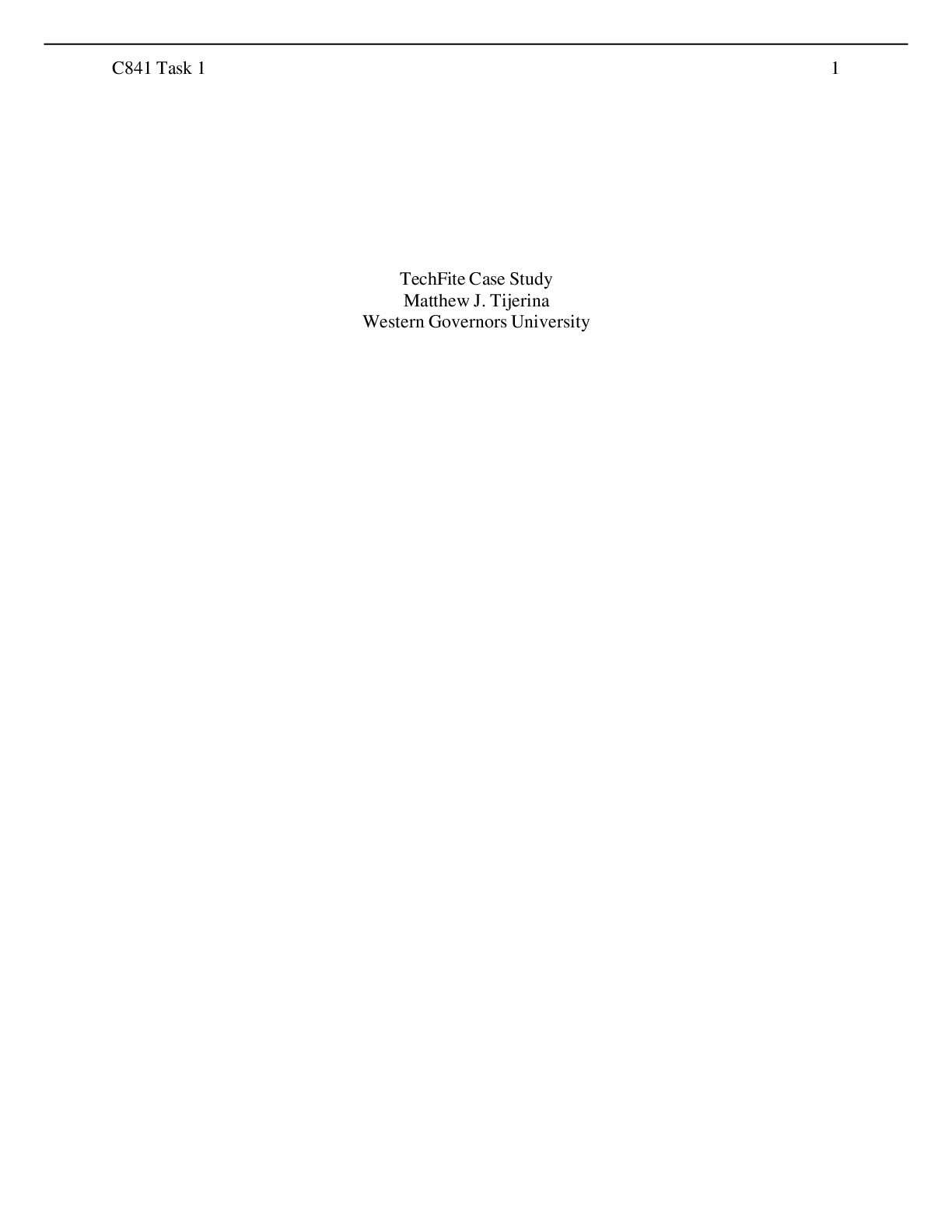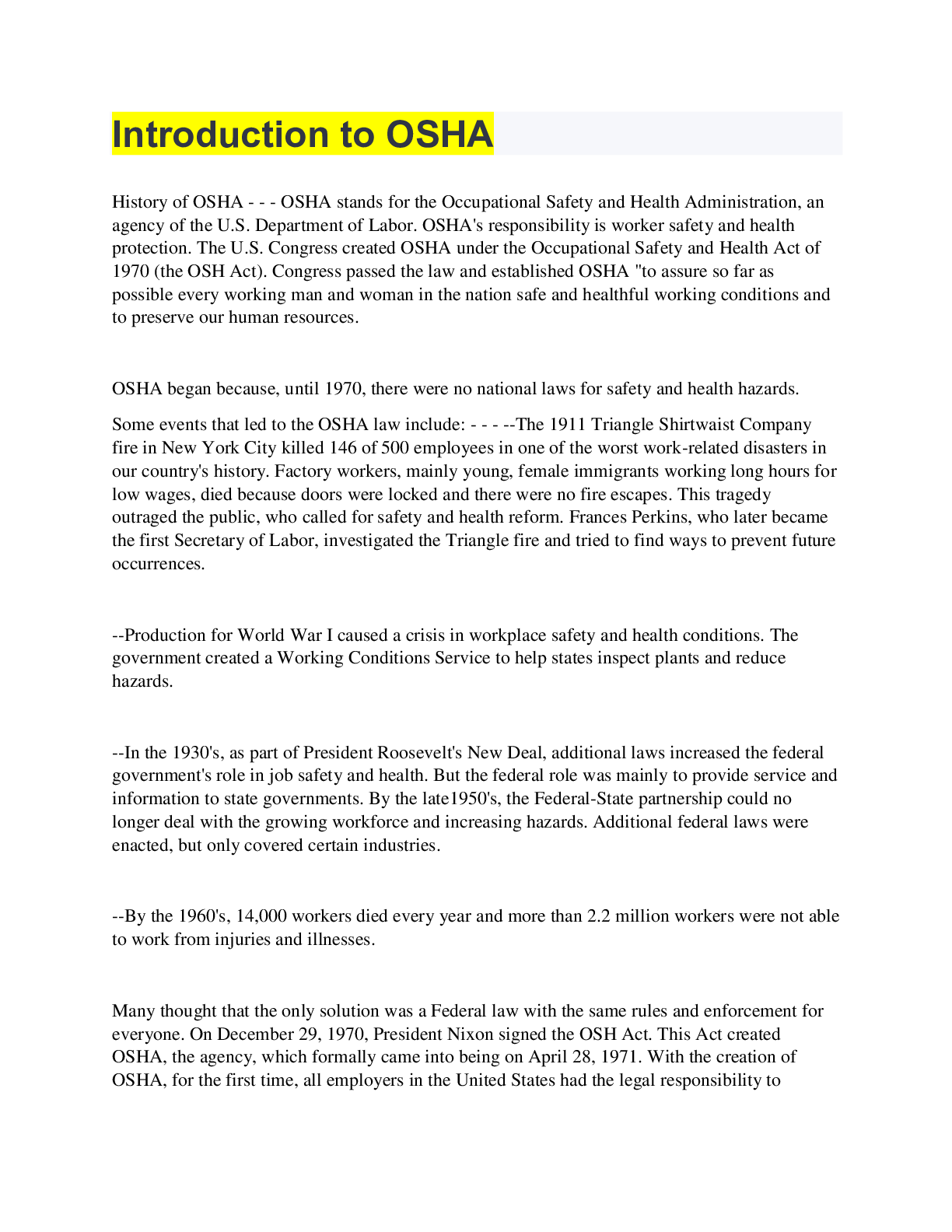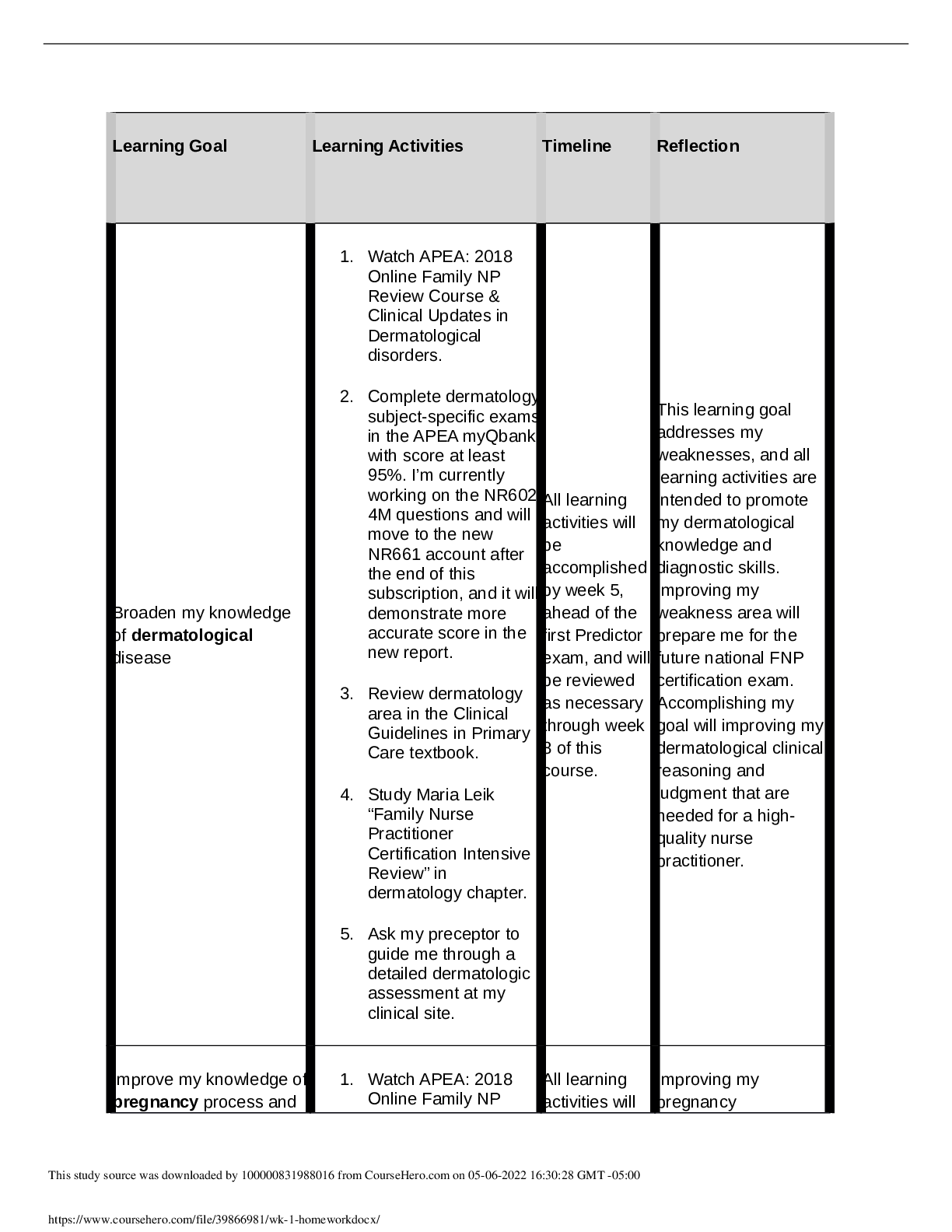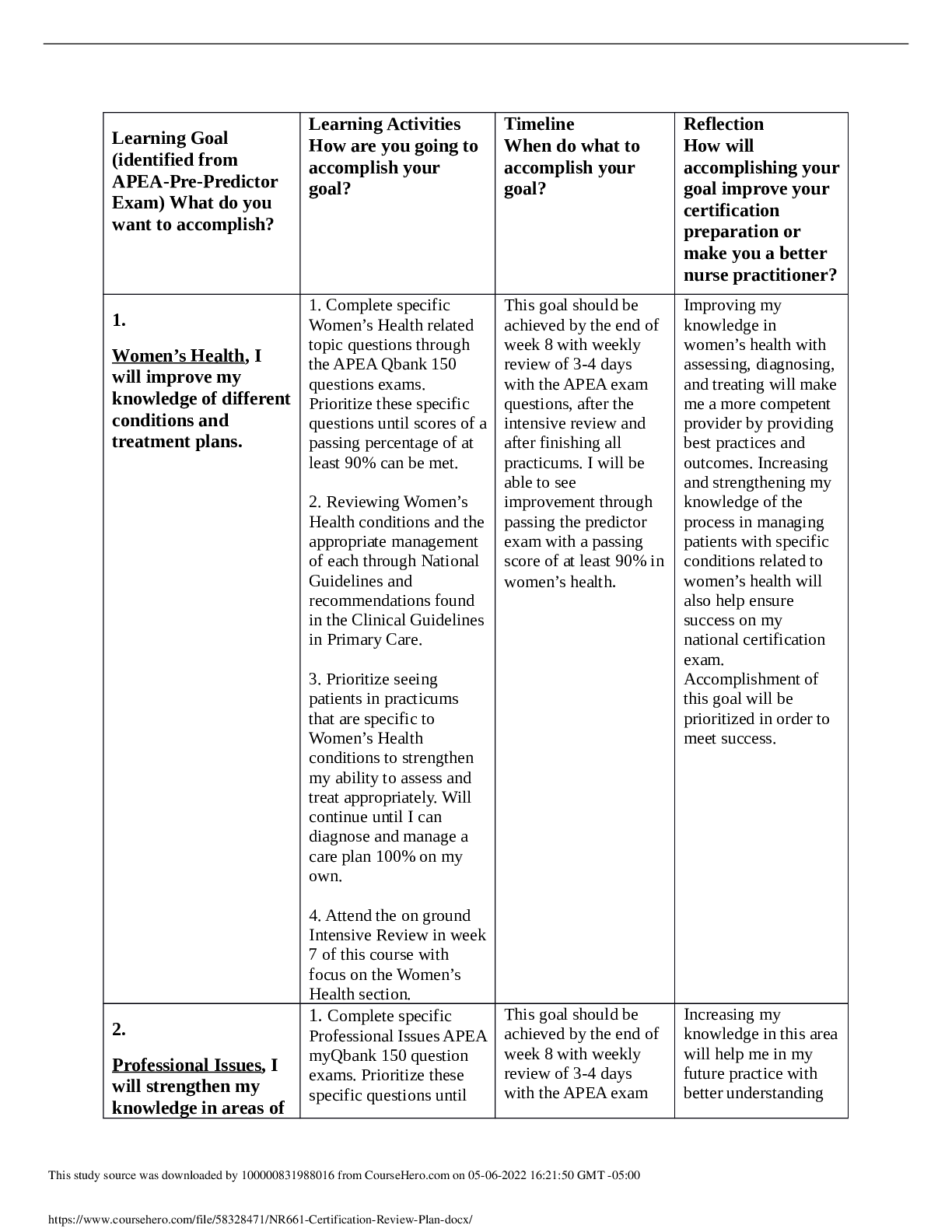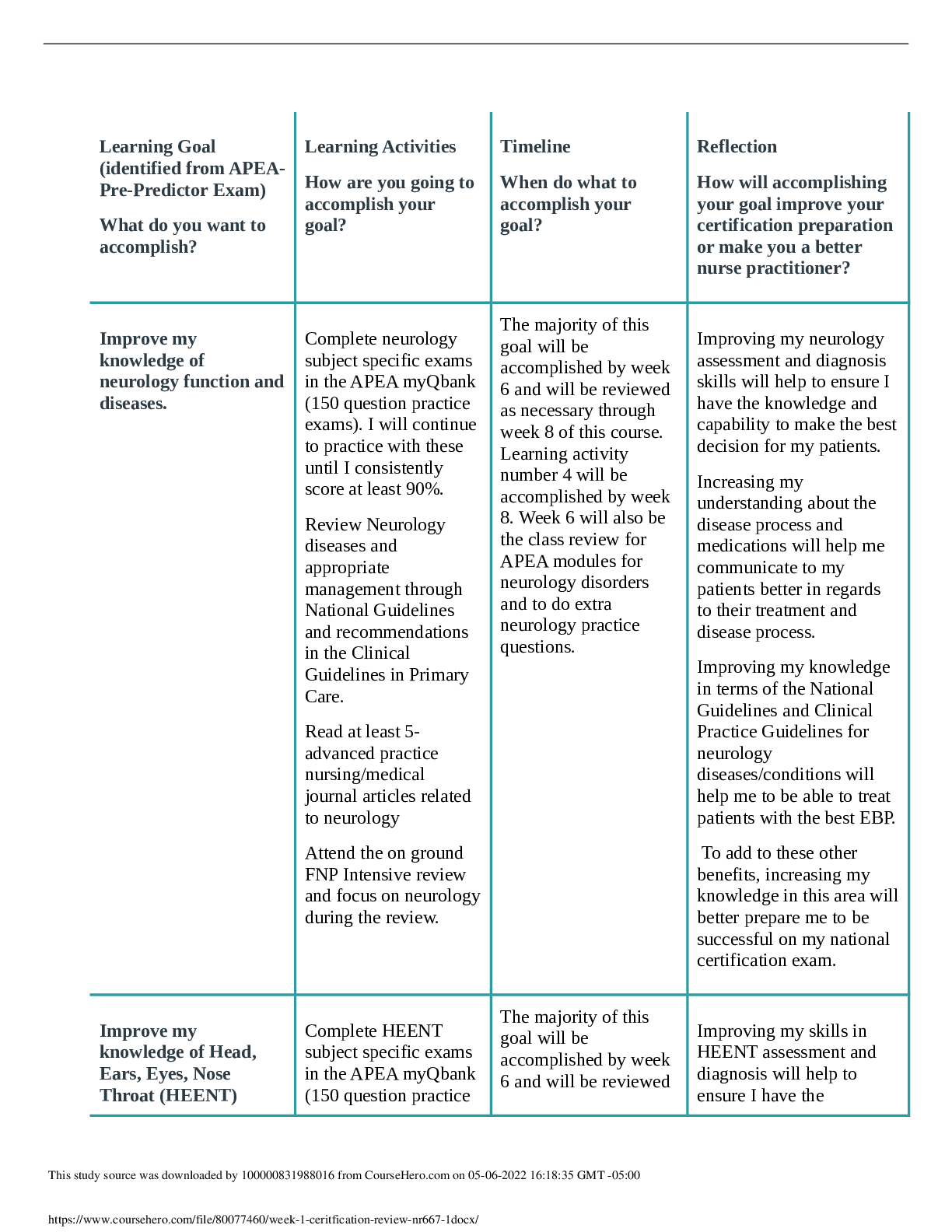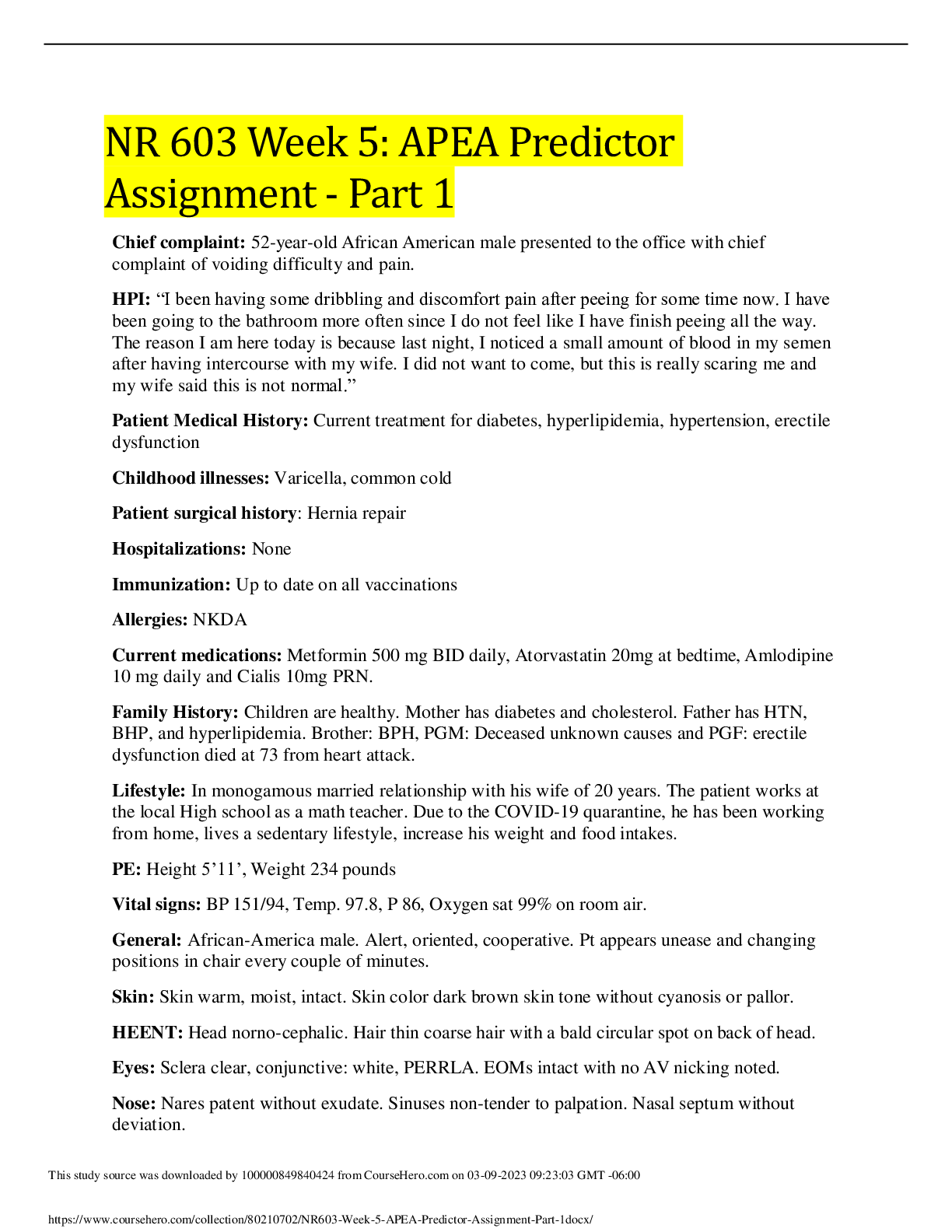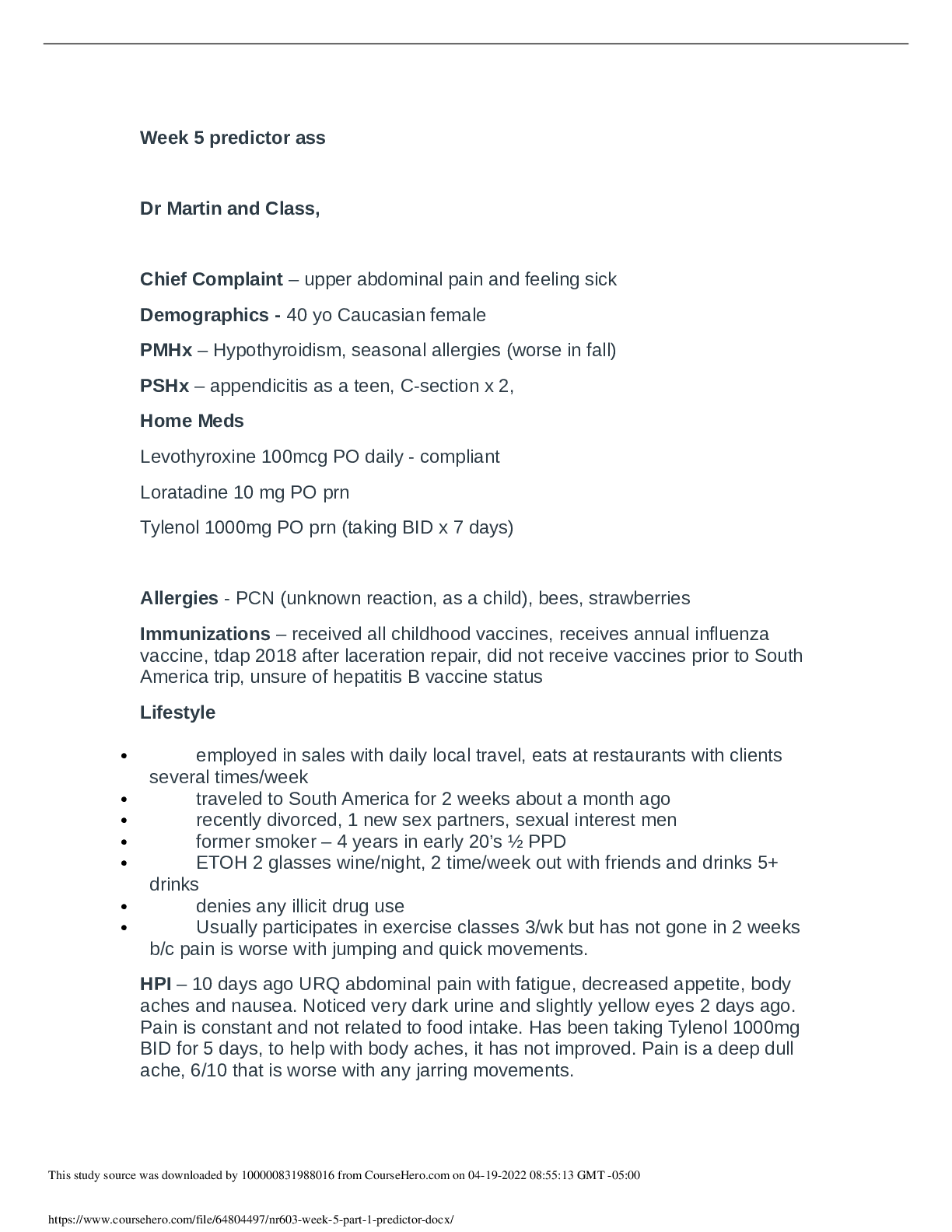Food and Nutrition > Summary > Nutrition Proctored PART 1 ,2 AND 3(BUNDLE) WITH COMPLETE GRADE A SOLUTIONS 2020 (All)
Nutrition Proctored PART 1 ,2 AND 3(BUNDLE) WITH COMPLETE GRADE A SOLUTIONS 2020
Document Content and Description Below
Nutrition Proctored Part 1: General Notes Part 2: Focused Review Notes Part 3: ATI Rational with Additional/Supported Information PART 1: GENERAL NOTES (Important Facts) • Be wary of questions ... regarding children drinking too much milk i.e. more than 3-4 cups of milk each day. Too much milk intake reduces intake of other essential nutrients, especially iron. Watch for anemia with milk-aholics. • Vitamin D’s presence is required by the parathyroid gland, in order for it to function. • If the patient is taking digoxin or K-supplements, avoid salt substitutes because many are potassium based • Potassium Sources: bananas, potatoes, citrus fruits • No milk (as well as fresh fruit or veggies) on neutropenic precautions. • Nondairy sources of calcium include RHUBARB, SARDINES, COLLARD GREENS 24 • Nonfat milk reduces reflux by increasing lower esophageal sphincter pressure • Yogurt has live cultures, so do not give to immunosuppressed patients • No phenylalanine with a kid positive for PKU (no meat, no dairy, no aspartame). • Acid Ash diet: cheese, corn, cranberries, plums, prunes, meat, poultry, pastry, bread • Alk Ash diet: milk, veggies, rhubarb, salmon PART 2: Focused Review Notes Manifestations of Vitamin A Toxicity • Can cause teratogenic effects on fetuses • Blurred vision • Bone pain or swelling • Hypercalcemia • ICP • Liver damage • Skin peeling, itching • Nausea and vomiting • Abnormal softening of the skull bone (children) and bulging fontanels Planning Care for a Client Who Follows Seventh-Day Adventist Dietary Laws • Vegetarianism o Do not consume animal products of any type INCLUDING eggs and milk products. o Vitamin B12 and Vitamin D supplements may be needed with a pure vegan diet. • Vegan diets are adequate in protein due to intake of nuts and legumes (dried peas and cooked beans). Initiating Continuous Enteral Feeding • This is recommended for critically ill patients because it is associated with small residual volumes, and a lower risk of aspiration and diarrhea. • Residual volumes should be measures q4-6hrs. • Feeding tubes should be flushed with water q4hr to maintain patency and hydration. • If patient’s gastric volume exceeds 500ml, the continuous feeding should be HELD and tolerance reassessed. o In children, residual volumes should be measured and held if the amount is equal to or greater than ¼ the prescribed feeding amount. • Residual should be returned and the amount rechecked in 30min to 1hr. Recommendations for Nutritional Supplement • Add skim milk to powder milk (double strength milk) • Use whole milk instead of water recipes • Add cheese, peanut butter, chopped hard-boiled eggs, yogurt. • Dip meats in eggs or milk and coat with bread crumbs before cooking. • Nuts and dried beans are significant sources of protein ß great alternatives to dairy allergy or lactose intolerance! Assessing Caloric Intake • Toddlers: 1 to 3 years old o Limit 100% juice 4 to 6oz a day o The 1 to 2-year-old requires whole cow’s milk to provide adequate fat. o Food serving size is 1 tablespoon for each year of age. • Preschoolers: 3 to 6 years old o Preschoolers need 13 to 19 g/day of complete protein. o 1 tablespoon per year of age for size of foods. o May switch to skin or 1% low-fat milk after 2 years. • School-Age Children: 6 to 12 years old o Weight loss program is directed for children 40% overweight. • Adolescence o Energy requirements average 2,000 calorie/day for a 12 to 18-year-old female. o Energy requirements average 2,200 to 2,800 calorie/day for a 12 to 18-yearold male. o Average U.S. adolescent consumes a diet deficient in folate, vitamin A and E, iron, zinc, mag, calcium, and fiber. • Adulthood and older adulthood o Need a balanced diet that consists of 40% to 55% carbs, and 10-20% fat (with no more than 30% fat). o A 24 hr dietary intake is helpful in determining the need for dietary education. - Use whole grains, select orange and dark green leafy vegetables, avoid fruits with added sugar (make half your plate vegetables and fruits), use vegetable oils, 132-362 discretionary calories are permitted per day. MEN CALORIE INTAKE WOMEN CALORIE INTAKE 19 to 30 years old: 2,400 calories 19 to 30 years old: 2,000 calories 31 to 50 years old: 2,200 calories 31 to 50 years old: 1,800 calories 51+ years old: 2,000 calories 51+ years old: 1,600 calories Teaching about High-Fiber Food Sources • Beans • Vegetables • Oats • Whole grains • Cereals • Nuts, seeds • Raw or dried fruits [Show More]
Last updated: 1 year ago
Preview 1 out of 11 pages
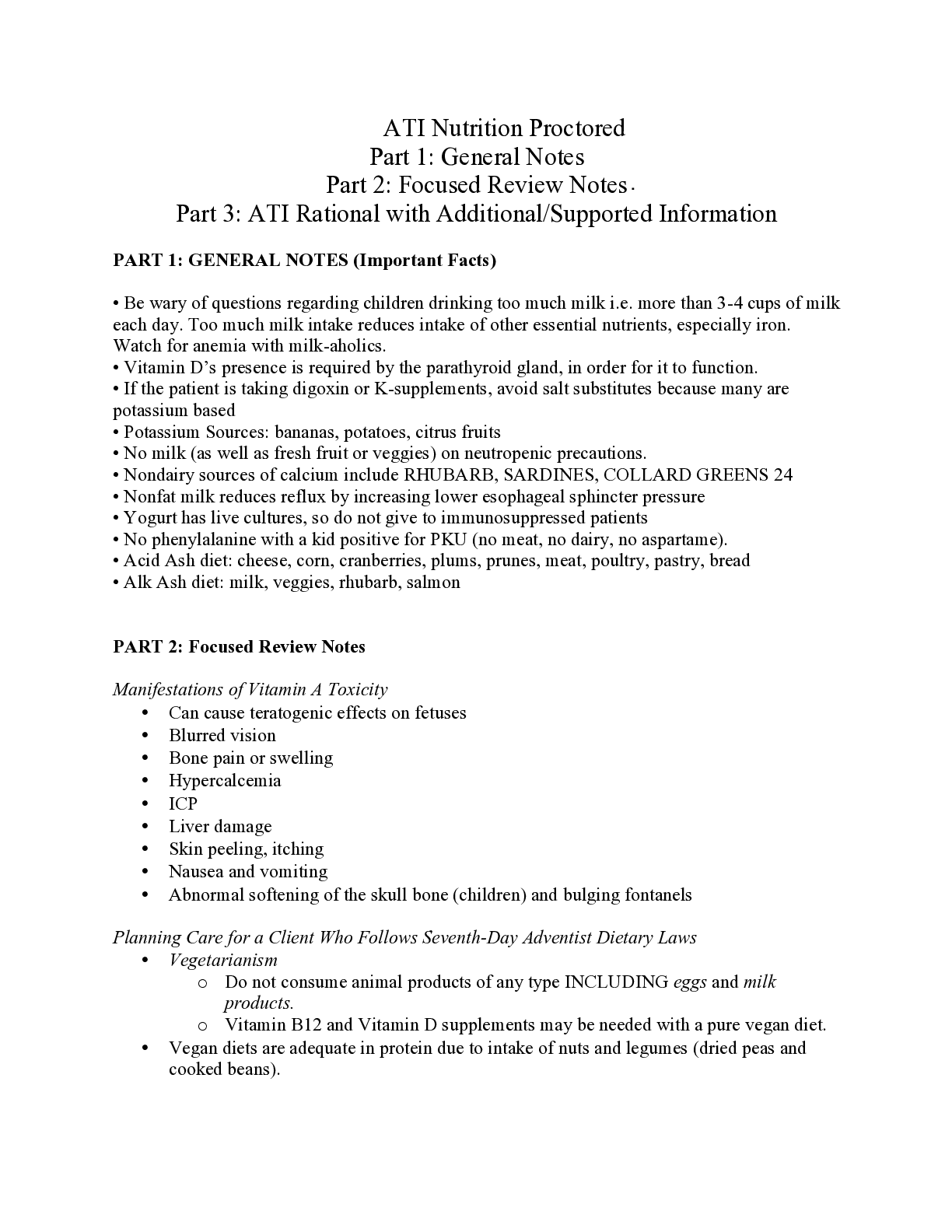
Buy this document to get the full access instantly
Instant Download Access after purchase
Add to cartInstant download
We Accept:

Reviews( 0 )
$14.00
Document information
Connected school, study & course
About the document
Uploaded On
Nov 17, 2021
Number of pages
11
Written in
Additional information
This document has been written for:
Uploaded
Nov 17, 2021
Downloads
0
Views
114

